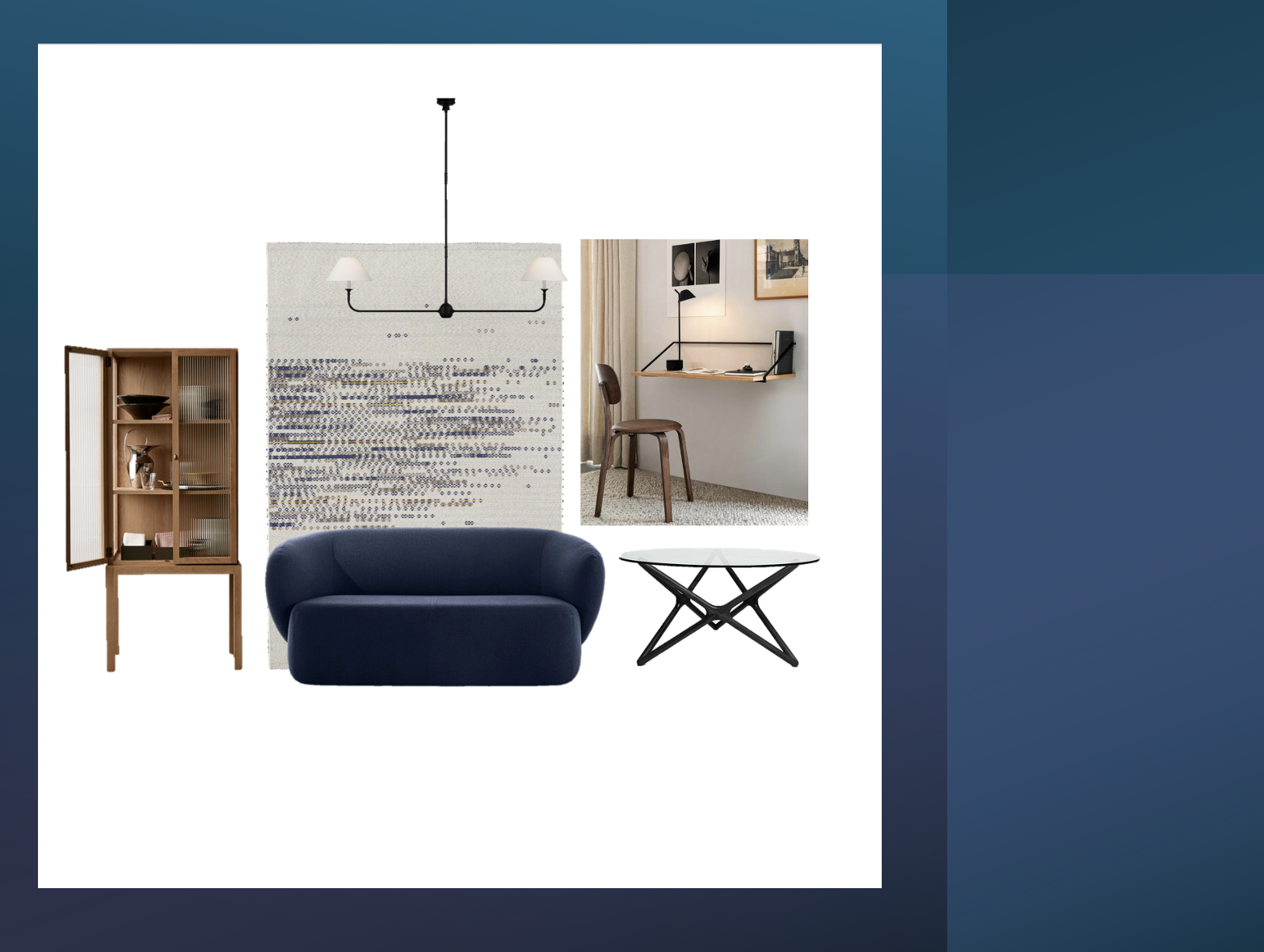How To Create A Cohesive Interior Style Across Your Whole Home
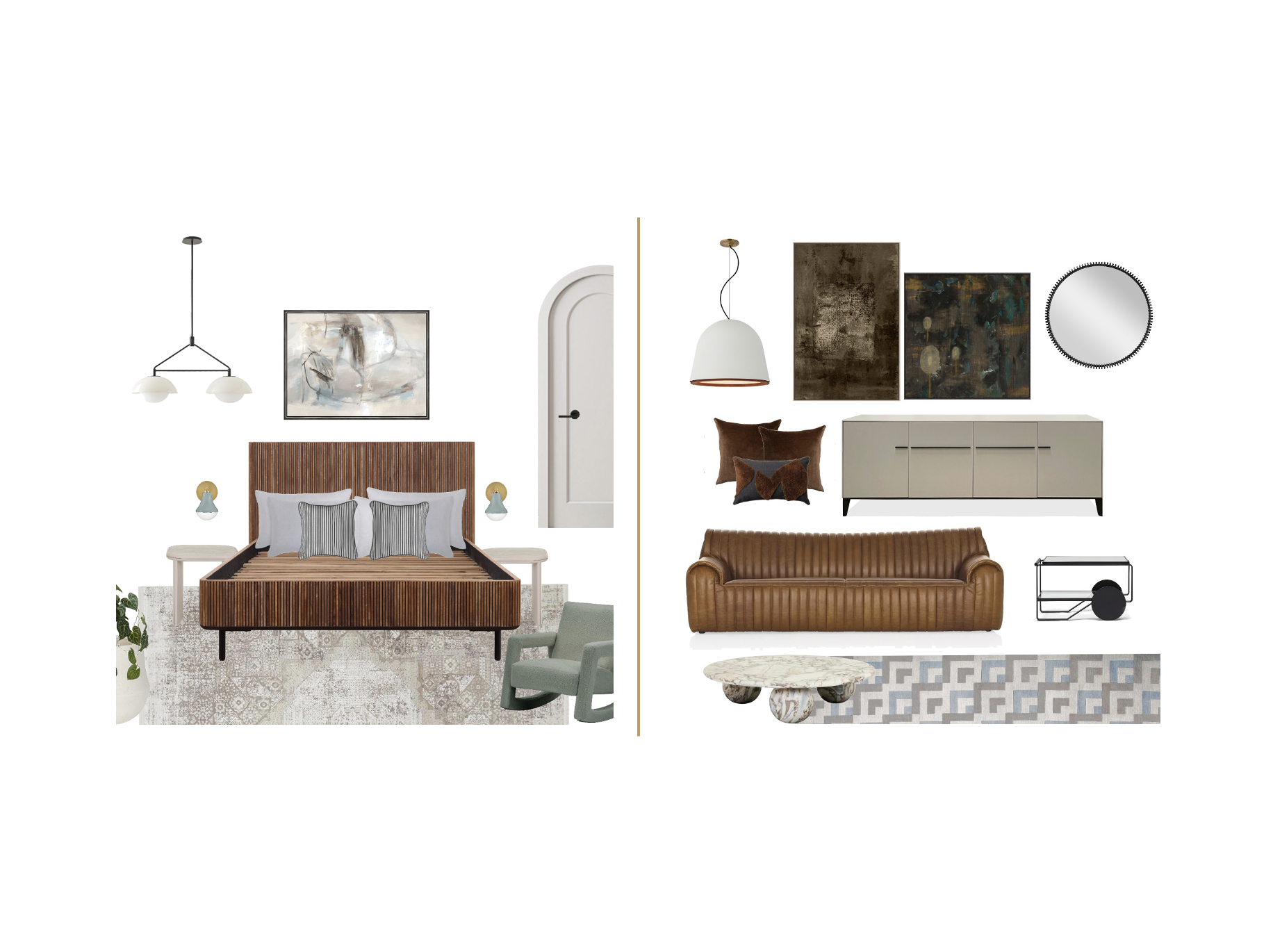
If your interior feels disconnected it may be lacking cohesiveness.
The backbone of any space is balancing your interiors across your whole home, this punctuates your areas with intention.
Simply put it comes down to this, a pulled together home reveals interplays of repetition and consistency through a curated selection of materials like timber, metal, glass and fabric. This is achieved through furniture, cushions, artwork, lighting, mirrors and accessories.
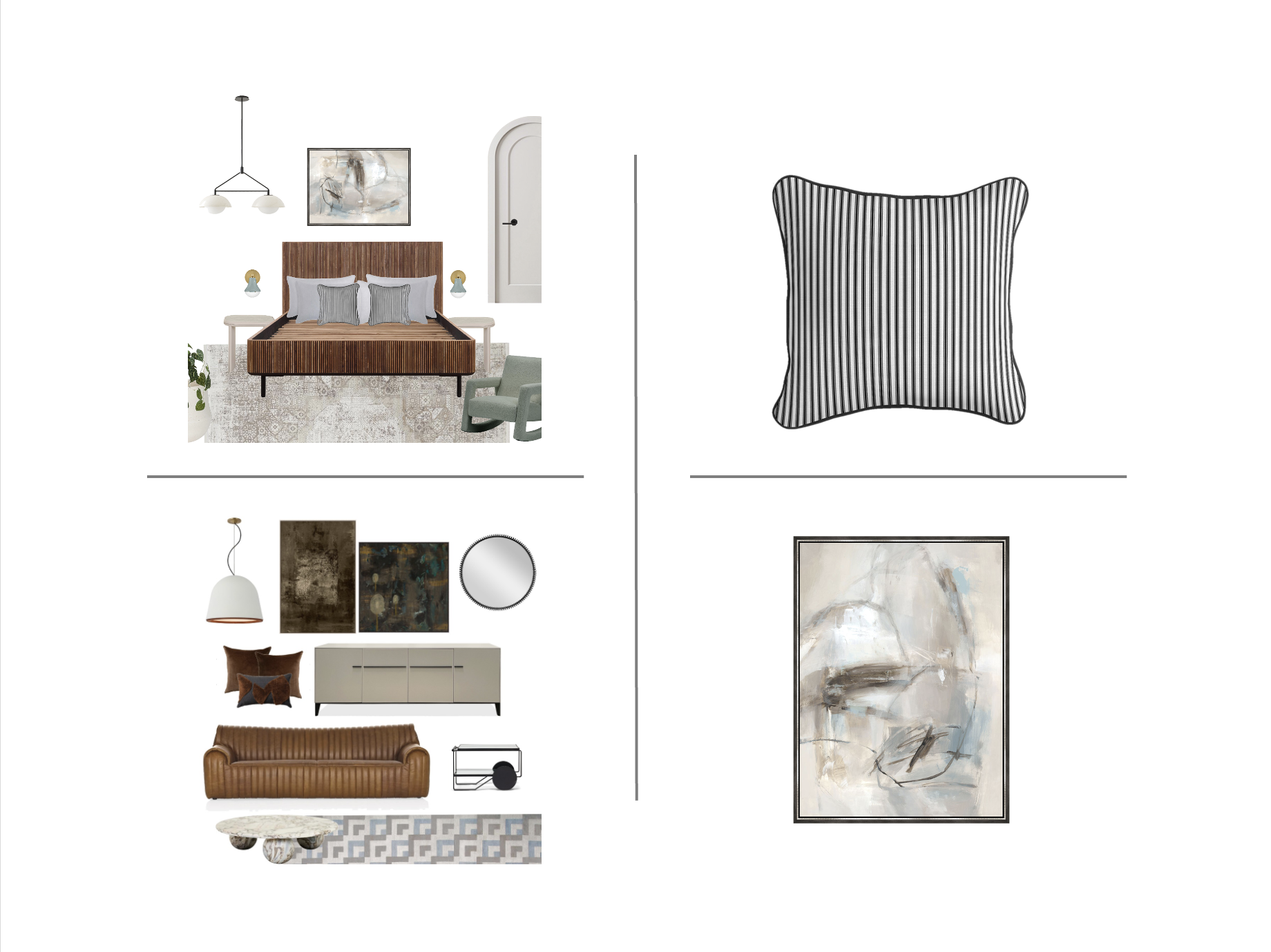
Colour Matters (Just Not In The Way You Think)
You may be wondering how much of a role does colour play for a considered balance. Well, colour will anchor but it is not the body of the story of 'cohesiveness'. That said, colour is the thing people notice first, but it is the material palette that carries more weight than colour when it comes to true integration.
What it comes down to is colour sets the tone, but if your materials clash it will not bring unity. Which explains why colour alone does not create flow. It will however keep things engaging. Ok, let me give you and another example. Let’s say you selected a timber buffet in an oatmeal matte finish for your dining room, then pairing wooden bedside tables in the master bedroom in the same wood finish and colour and a rug in the same tone is keeping things cohesive, yes it can be that simple! This is considered cohesiveness. However, to keep things unpredictable the bedhead or bed frame does not need to be in the same material or colour, let it have its own identity. Think about matching the bedhead in the same tone as the leather sofa in the living room, but do not match the colour of the leather sofa colour to anything else in the space it lives. By doing so it differentiates the separate spaces while keeping things connected to a degree.

Before I dive in even further, I want to highlight a common mistake people often make when trying to achieve a rhythm throughout the home; and that is trying to balance with matchy-matchy styling i.e matching furniture sets and fabrics, forgoing variation in style and texture and essentially ‘missing out’ on a unique custom interior that has harmonious flow. Or another example is via an unimaginative neutral palette of white and beige (and nothing in between) in every single room, ultimately ending up with a colourless 'copy and paste' job.
I am not implying that there is anything ‘wrong’ with limiting your colour palette, but the truth is from a design lens it is colourless, and you cannot call it cohesiveness unless it is textural through material objects. Keep in mind if you introduce a good selection of materials for continuity and experiment with multiple patterns in similar tones, then a neutral palette holds up. Which brings me to this - how do you draw a fine line from perfectly matched colours and furnishings, to turning it into a relatable layout threaded throughout the home. Keep reading, what comes next connects everything and is the part most people overlook!
I typically add a small series of grounding black accents to create an element of cohesion across the space. A good example of this; a black striped cushion on your bed, echoed by the black cabinet pulls on your sideboard in your living room, or a mirror framed in black that hangs in the hallway or living room. Are you with me? Remember black is not a colour, however it is a strong neutral accent and this is where interest plays a role. A traditional colour will only play that ‘all important’ role to keep the marriage working when it is up against good strong material palettes and textures.
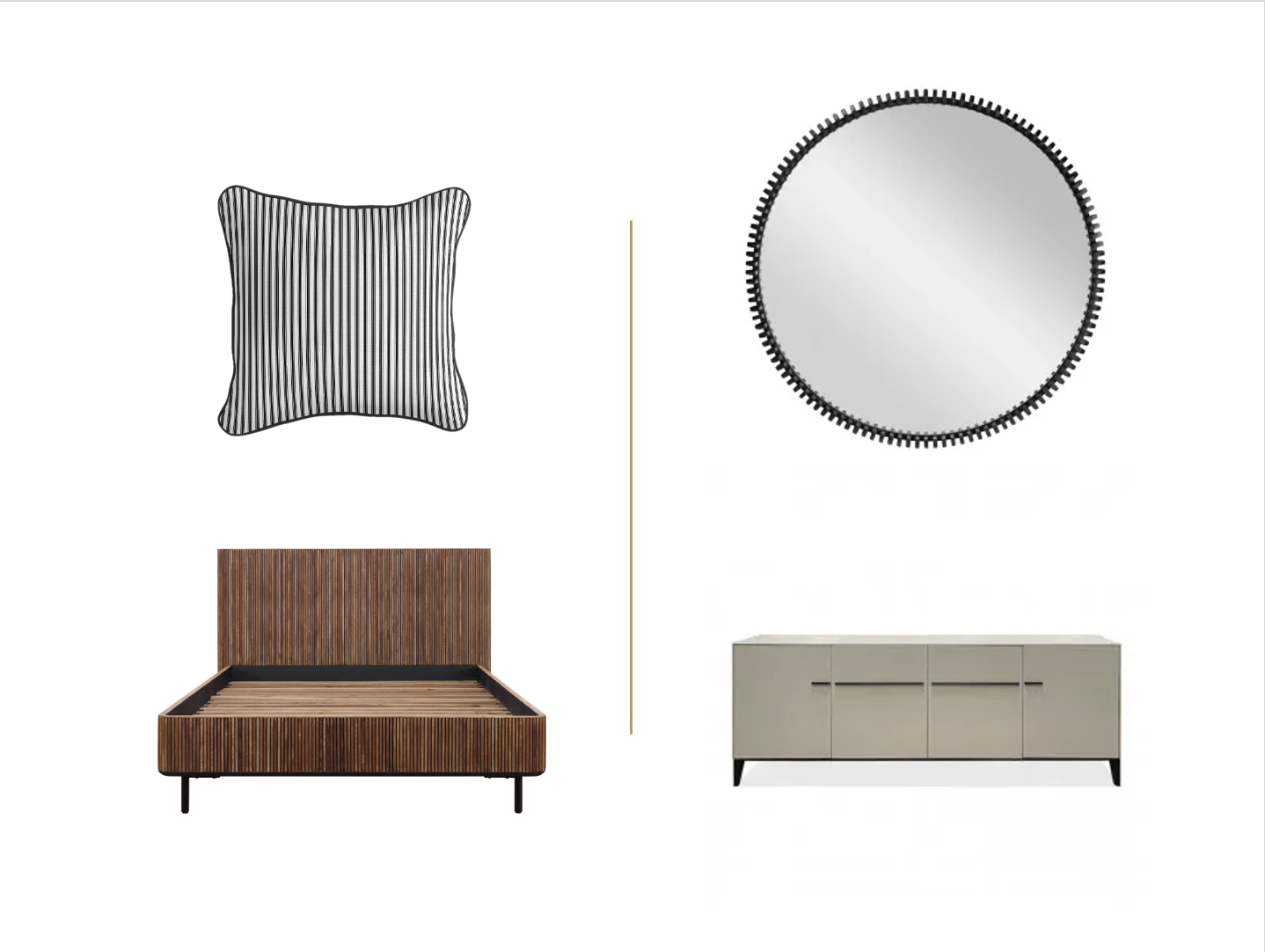
How Relevant Are Rugs
Using words like ‘grounding’ is so common now days in interior design, however this is exactly how I want to explain what a rug will do for any room. It grounds your space by giving weight to it and centres everything. Rugs keep the eye moving comfortably from one area to the next visually linking them. Choose different patterns for contrast for each space but keep them feeling related with similar colours or tones. This allows you to experience the warmth and comfort of rugs while still delineating between two or three distinct zones in the home.
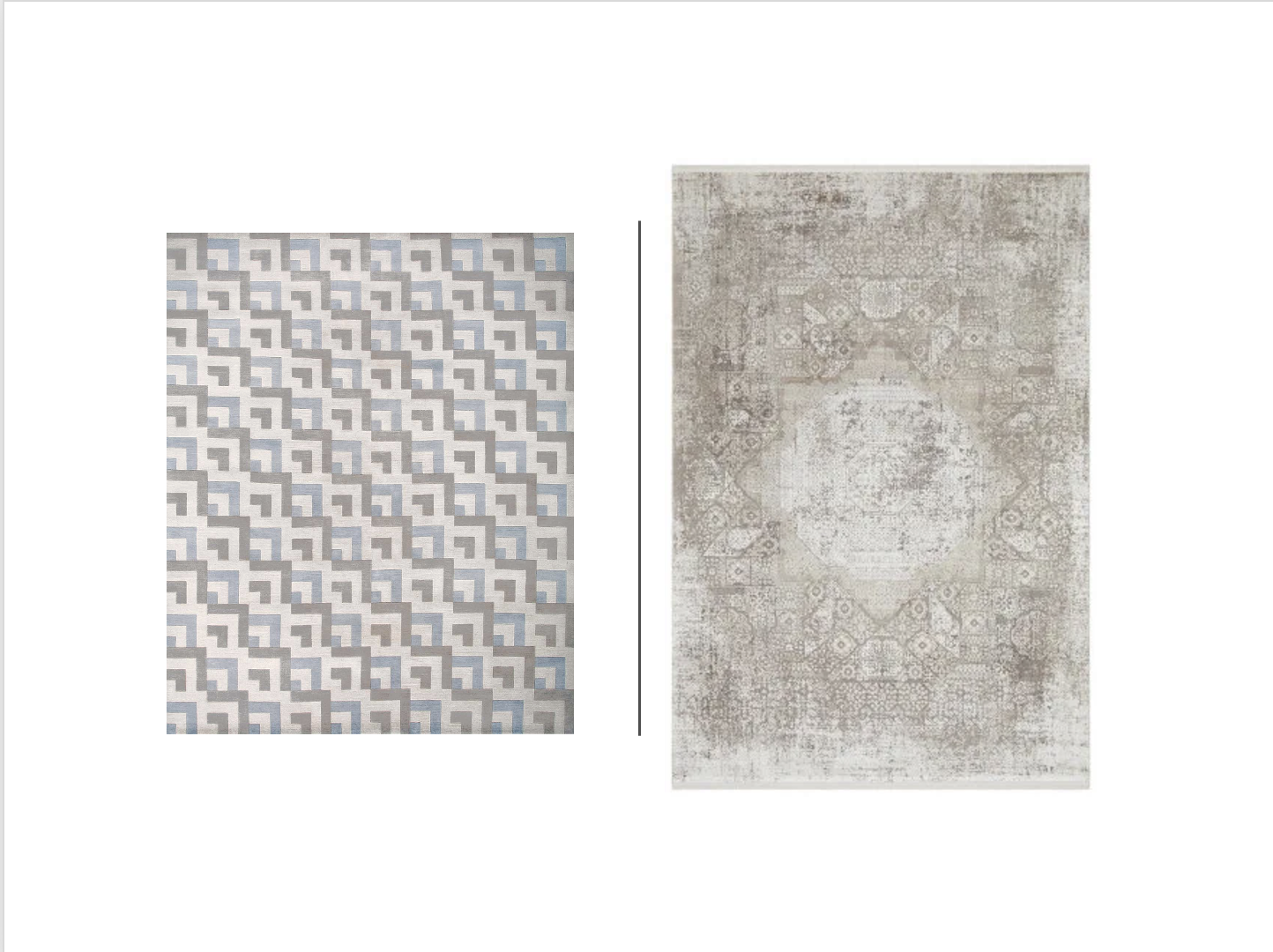
What About Artwork
Here is another example; if your abstract artwork in the living room is dark and has depth, you do not have to convey pieces in your bedroom with the same heaviness. No, but keep the subject matter relevant, with some measure of similar punches of colour that differ. Consider introducing a complementing colour if you wish, this will still work.
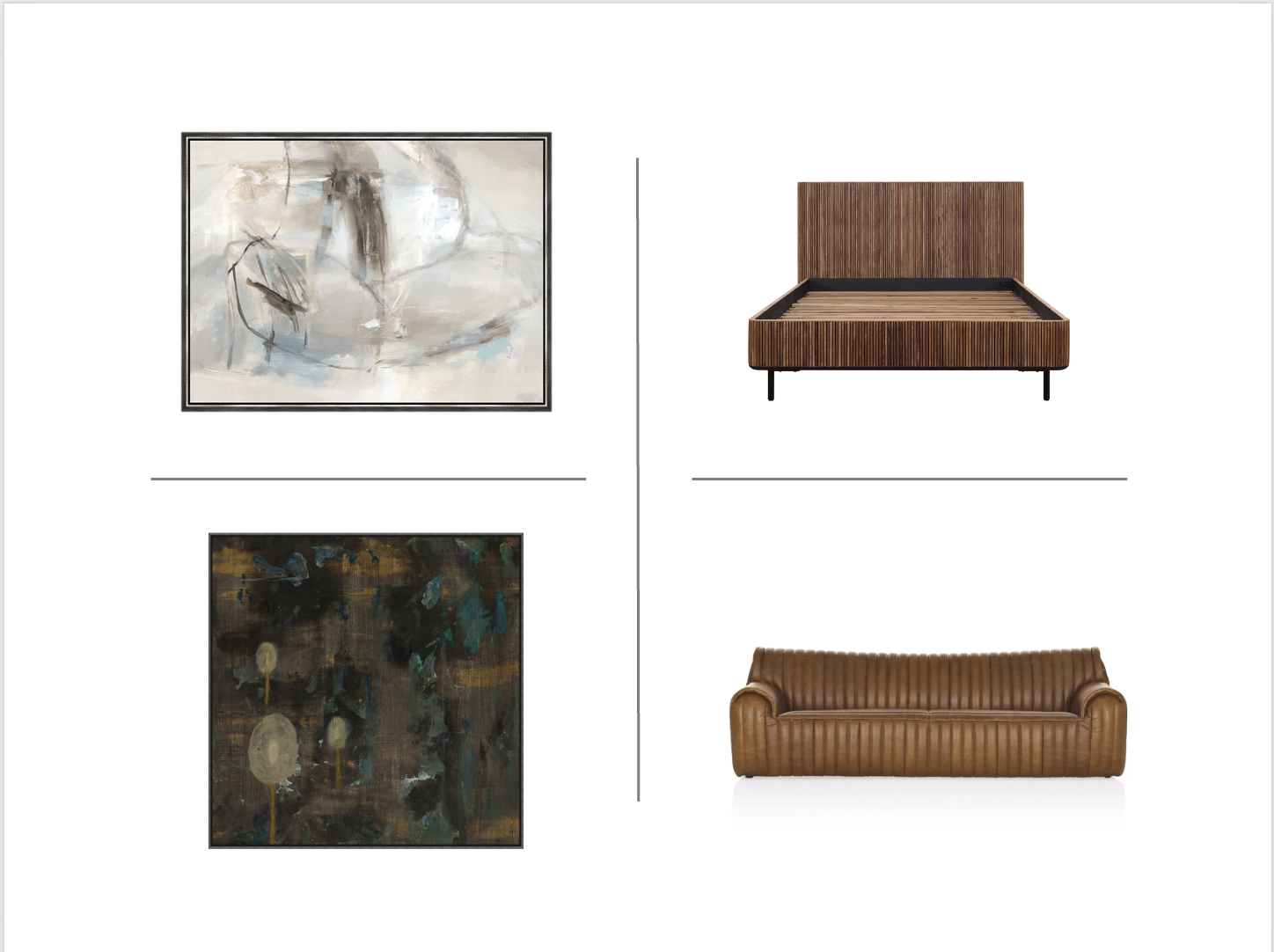
Stick to a Consistent Foundation or Else
I once had a client who had a desire to give each room its own character, colour and style. This meant there was a risk we would end up without some level of continuity and personalisation, and the home would feel visually disjointed.
I turned the problem into an opportunity to discuss what it means to have a successful outcome that aligned with me as well. It was crucially important to a point so I had enough level of creativity to connect the space with my ideas and recommendations.
I explained my desire was to still give each room its own character as per the client's request, without losing the overall flow, even if materials and styles changed we had to keep a uniformed feel but I was able ‘to up the ante’ to keep the client satisfied. My focus turned to keeping the design strategy consistent, but with variety. At the end of the day, we both wanted the outcome of an interior with the ultimate finishing touches that married up perfectly.
Here is a simple breakdown of the key points to keep in mind if you are pulling it together yourself.
- Use similar materials that do not clash.
- Change up patterns, not colour palettes.
- Add black accents.
- Keep foundation consistent.
- Avoid perfectly paired furniture from room to room but use similar materials.
- Use similar coloured rugs with different patterns to keep things grounded.
- Use artwork with similar tones and colours, keep the subject relevant.
Conclusion
If you are decorating your home yourself, the points above will help steer you in the right direction. But if it starts to feel overwhelming, the smartest move is to pause, plan, and avoid rushing into it. Spend time researching online and exploring well-curated Instagram accounts, which are fantastic for styling direction and layout ideas. Re-read this article or others until the key principles really click. Here is the truth: buying random furniture, cushions and homewares, then returning half of them because they do not work, is not a strategy.
A Note from The Author
If your budget allows, working with a qualified interior decorator can save time and stress, and even money. Having an interior decorator from the beginning not only gives you confidence, but it also results in a space that feels personalised and comfortable to live in.
Article written by Marina Mura
Moodboards curated by Author.
Find your ideal style | E:
marinamura@moodblogs.com or visit my Inspiration page in the Menu bar.
Moodboard image credit: Willow Home Living, Rug Culture, Globewest, Oz Design, Lighting Illusions, Montauk Lighting, Merlino Furniture, Boyd Art, Boyd Blue, Coco Republic, Greg Natale, Saarde Home.
READ MORE

How to Master High-Low Interior Decorating Without Sacrificing Style

How to Master High-Low Interior Decorating Without Sacrificing Style

Why the 60-30-10 Rule Is Key to My Interior Decorating Philosophy

Why the 60-30-10 Rule Is Key to My Interior Decorating Philosophy

In Conversation With Shelley Boyd, the Founder of Boyd Blue

In Conversation With Shelley Boyd, the Founder of Boyd Blue

Should You Hire a Colour Consultant Alongside an Interior Decorator?

Should You Hire a Colour Consultant Alongside an Interior Decorator?

Design Spotlight: The Unforgettable Hotel Interiors of The White Lotus

Design Spotlight: The Unforgettable Hotel Interiors of The White Lotus

What Urban Styling Offers Men

What Urban Styling Offers Men

Small Apartment Interior Tips for Men: Smart Styling for a Better Space

Small Apartment Interior Tips for Men: Smart Styling for a Better Space

How to Create a Masculine, Stylish Apartment With Ease

How to Create a Masculine, Stylish Apartment With Ease

Masculine Christmas Table Inspiration - Ultimate Shopping List

Masculine Christmas Table Inspiration - Ultimate Shopping List

Styling Your Home for Christmas

Styling Your Home for Christmas

Men’s Interior Styling - Transform Your Bedroom Space

Men’s Interior Styling - Transform Your Bedroom Space

How to Create an Imposing Art Wall

How to Create an Imposing Art Wall

How To Select Light Fixtures for Your Interior Design

How To Select Light Fixtures for Your Interior Design

Styling Modern Victorian

Styling Modern Victorian

How to Style an Australian Bush Home Inside and Out

How to Style an Australian Bush Home Inside and Out

Japandi - A Life Time of Style

Japandi - A Life Time of Style

How To Style A Young Girls Bedroom

How To Style A Young Girls Bedroom

Pantone Colour Of The Year 2024 - Peach Fuzz

Pantone Colour Of The Year 2024 - Peach Fuzz

How To Elevate a New Bathroom Using Marble

How To Elevate a New Bathroom Using Marble

Christmas Table Styling

Christmas Table Styling

Using Colour And Natural Light To Make Your Space Pop

Using Colour And Natural Light To Make Your Space Pop

Art For A Spring Inspired Living Room

Art For A Spring Inspired Living Room

5 Ways To Bring Luxury Milanese Styling To Your Hospitality Space

5 Ways To Bring Luxury Milanese Styling To Your Hospitality Space

How To Decorate a Hamptons-Style Bedroom With a Difference

How To Decorate a Hamptons-Style Bedroom With a Difference

How to Select A Customisable Sofa

How to Select A Customisable Sofa

In Conversation With Tashi Tsering, Creative Head And Founder Of Tashi Design Studio

In Conversation With Tashi Tsering, Creative Head And Founder Of Tashi Design Studio

What is Chintz – The Resurgence Of A Historic Textile With a Modernistic Twist

What is Chintz – The Resurgence Of A Historic Textile With a Modernistic Twist

How To Create an Easter Table Scape

How To Create an Easter Table Scape

Bathroom Remodel and Design

Bathroom Remodel and Design

My Holistic View on ChatGPT

My Holistic View on ChatGPT

Easy Table Setting Styling

Easy Table Setting Styling

How To Style A Summer Outdoor Setting

How To Style A Summer Outdoor Setting

Staying Home In January

Staying Home In January

Styling Your Home for Christmas

Styling Your Home for Christmas

In Conversation With Jacinta Bishop, Founder And Designer Of Salt Living

In Conversation With Jacinta Bishop, Founder And Designer Of Salt Living

Paying Homage To Sardinian Textiles

Paying Homage To Sardinian Textiles

What Is The Difference Between A Duvet, Doona & Quilt?

What Is The Difference Between A Duvet, Doona & Quilt?

How to Style A White on White Interior

How to Style A White on White Interior

How to Style Art Deco With A Modern Vibe

How to Style Art Deco With A Modern Vibe
.jpeg)
How to Create A Modern Farmhouse Style
.jpeg)
How to Create A Modern Farmhouse Style

Selecting Art For Your Interior Space

Selecting Art For Your Interior Space

Creating the Perfect Hamptons Coastal Bedroom

Creating the Perfect Hamptons Coastal Bedroom

Outdoor Alfresco Styling - How To Create The Perfect Outdoor Space You Will Love


